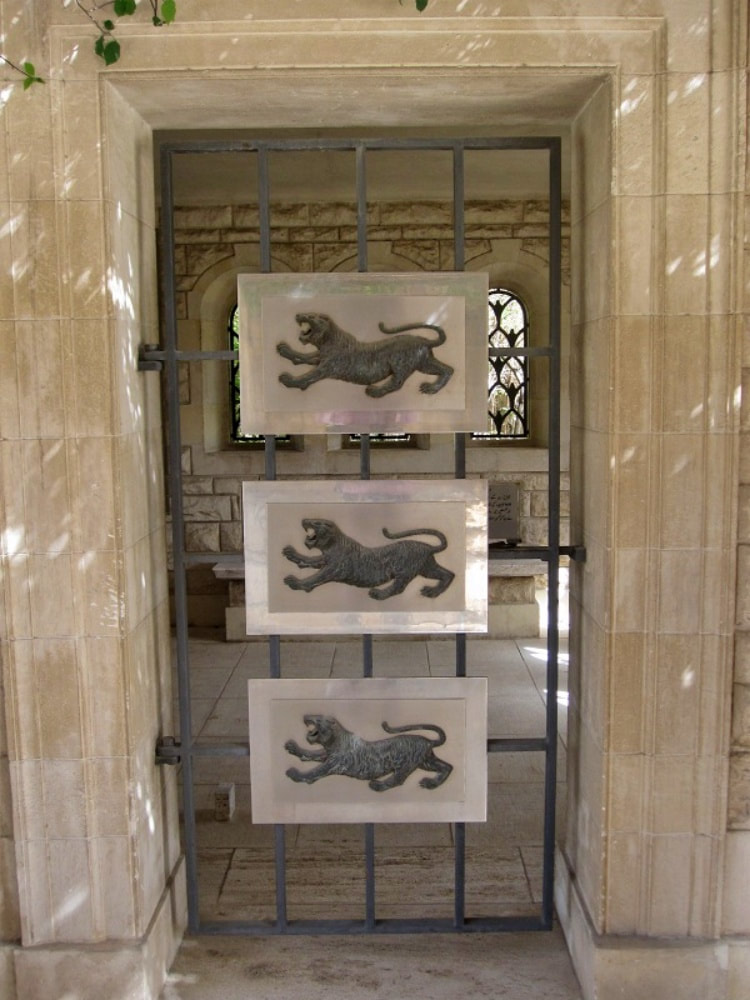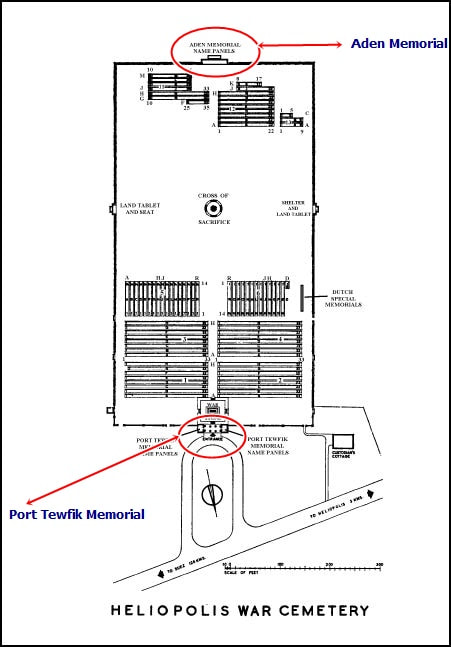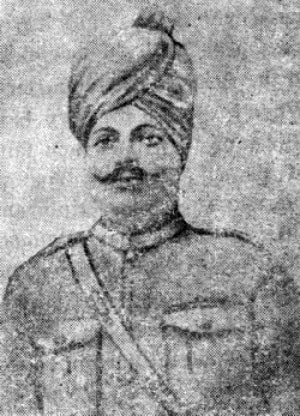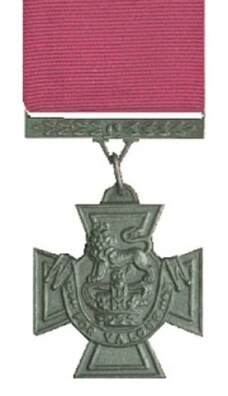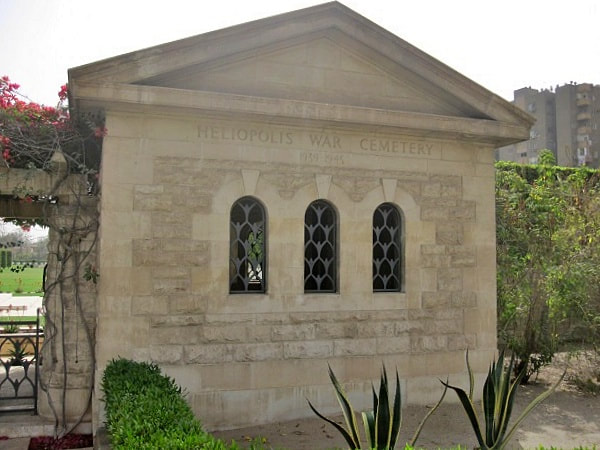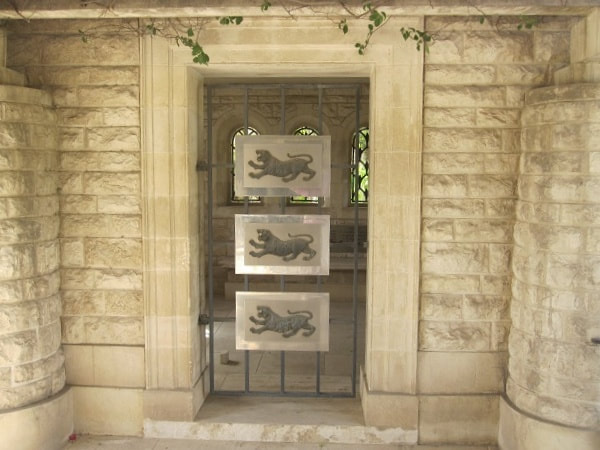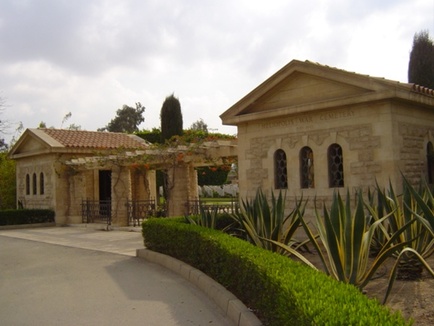HELIOPOLIS (PORT TEWFIK) MEMORIAL
Cairo
Egypt
GPS Coordinates: Latitude: 30.07971, Longitude: 31.32971
Location Information
Heliopolis, a major suburb of Cairo, lies 10 kilometres to the north-east of the main city centre, approximately 6 kilometres from the airport.
Heliopolis War Cemetery is situated opposite El Banat (Girls') College in Nabil el Wakkard Street, and access to the cemetery is from this street.
Visiting Information
Opening times:
Saturday to Thursday: 7.00am to 2.30pm.
Friday: closed.
Historical Information
The HELIOPOLIS (PORT TEWFIK) MEMORIAL commemorates 3,726 men who served and died with the Indian Army during the First World War in Egypt and Palestine, and who have no known grave. The panels bearing the names, erected in the entrance pavilions to Heliopolis War Cemetery, were unveiled by the Indian Ambassador to Egypt in October 1980. The memorial was created to replace the original memorial at Port Tewfik (which had been designed by Sir John Burnet), which existed at the South end of the Suez Canal. It suffered severe damage during the Israeli-Egyptian conflict of 1967-1973 and was eventually demolished.
Commemorated on Memorial: India 3,726, United Kingdom 1. Total 3,727. The U. K. burial is 18646 Fireman Raju Subbayya, East African Railways, died 25th September 1918.
Memorial images used with the permission of the Commonwealth War Graves Commission
The pavilion at the rear of the cemetery houses the HELIOPOLIS (ADEN) MEMORIAL to 613 men of the Commonwealth forces who died in the defence of Aden during the First World War and who have no known grave. The original memorial, sited at Steamer Point, Aden was demolished, as a result of port reconstruction work, in 1967.
Commemorated on the Memorial: India 574, United Kingdom 33, New Zealand 6. Total 613.
HELIOPOLIS WAR CEMETERY contains more than 1,700 Commonwealth burials of the Second World War and a number of war graves of other nationalities.
World War Two Identified Casualties: United Kingdom 1,246, South Africa 226, New Zealand 138, India 83, Australia 35, Poland 30, Canada 11, Belgium 7, Greece 7, Netherlands 4, Czechoslovakia 1, Italy 1. Total 1,789.
World War Two Unidentified Casualties: 41.
Heliopolis, a major suburb of Cairo, lies 10 kilometres to the north-east of the main city centre, approximately 6 kilometres from the airport.
Heliopolis War Cemetery is situated opposite El Banat (Girls') College in Nabil el Wakkard Street, and access to the cemetery is from this street.
Visiting Information
Opening times:
Saturday to Thursday: 7.00am to 2.30pm.
Friday: closed.
Historical Information
The HELIOPOLIS (PORT TEWFIK) MEMORIAL commemorates 3,726 men who served and died with the Indian Army during the First World War in Egypt and Palestine, and who have no known grave. The panels bearing the names, erected in the entrance pavilions to Heliopolis War Cemetery, were unveiled by the Indian Ambassador to Egypt in October 1980. The memorial was created to replace the original memorial at Port Tewfik (which had been designed by Sir John Burnet), which existed at the South end of the Suez Canal. It suffered severe damage during the Israeli-Egyptian conflict of 1967-1973 and was eventually demolished.
Commemorated on Memorial: India 3,726, United Kingdom 1. Total 3,727. The U. K. burial is 18646 Fireman Raju Subbayya, East African Railways, died 25th September 1918.
Memorial images used with the permission of the Commonwealth War Graves Commission
The pavilion at the rear of the cemetery houses the HELIOPOLIS (ADEN) MEMORIAL to 613 men of the Commonwealth forces who died in the defence of Aden during the First World War and who have no known grave. The original memorial, sited at Steamer Point, Aden was demolished, as a result of port reconstruction work, in 1967.
Commemorated on the Memorial: India 574, United Kingdom 33, New Zealand 6. Total 613.
HELIOPOLIS WAR CEMETERY contains more than 1,700 Commonwealth burials of the Second World War and a number of war graves of other nationalities.
World War Two Identified Casualties: United Kingdom 1,246, South Africa 226, New Zealand 138, India 83, Australia 35, Poland 30, Canada 11, Belgium 7, Greece 7, Netherlands 4, Czechoslovakia 1, Italy 1. Total 1,789.
World War Two Unidentified Casualties: 41.

